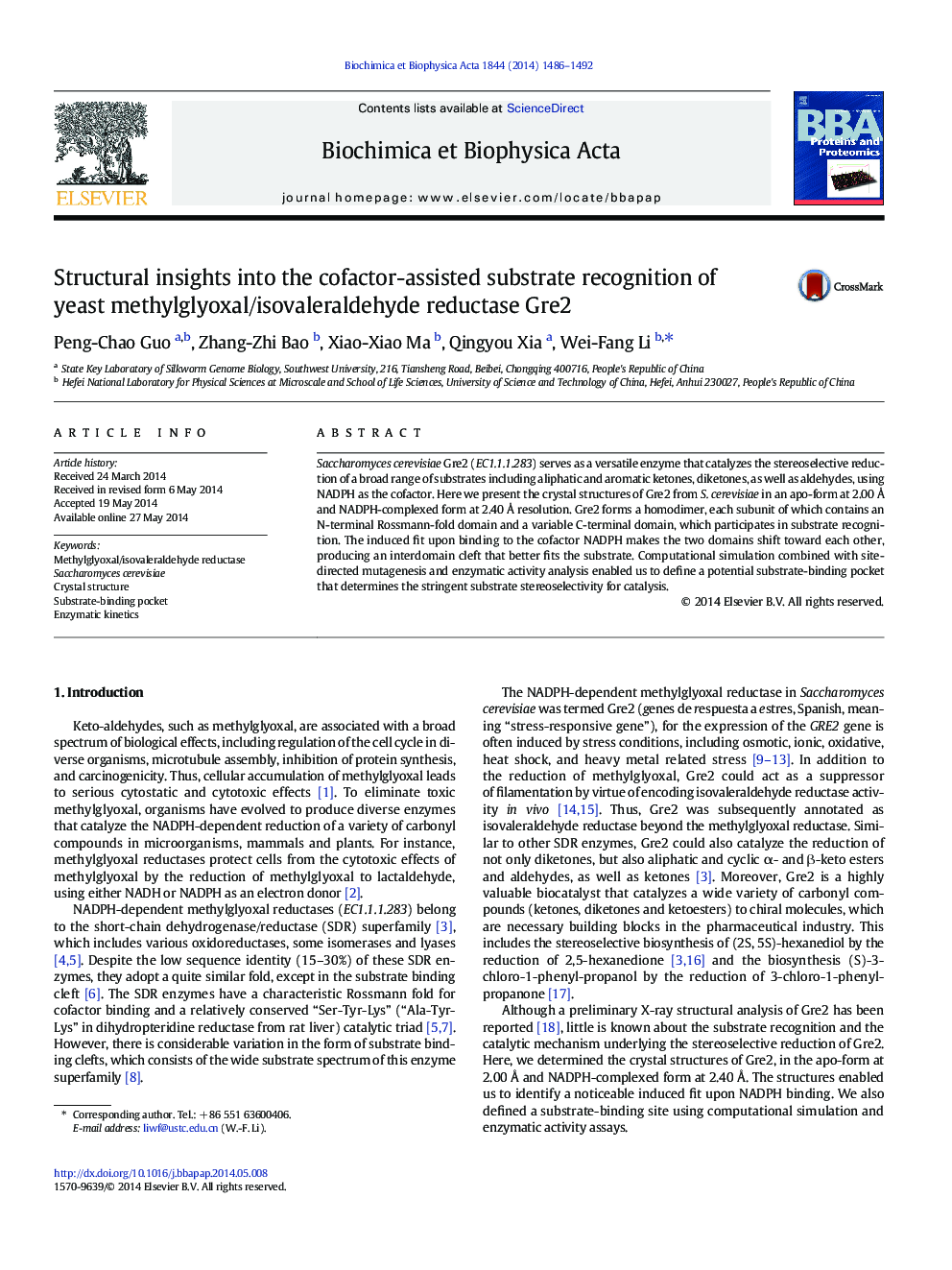| Article ID | Journal | Published Year | Pages | File Type |
|---|---|---|---|---|
| 10537545 | Biochimica et Biophysica Acta (BBA) - Proteins and Proteomics | 2014 | 7 Pages |
Abstract
Saccharomyces cerevisiae Gre2 (EC1.1.1.283) serves as a versatile enzyme that catalyzes the stereoselective reduction of a broad range of substrates including aliphatic and aromatic ketones, diketones, as well as aldehydes, using NADPH as the cofactor. Here we present the crystal structures of Gre2 from S. cerevisiae in an apo-form at 2.00Â Ã
and NADPH-complexed form at 2.40Â Ã
resolution. Gre2 forms a homodimer, each subunit of which contains an N-terminal Rossmann-fold domain and a variable C-terminal domain, which participates in substrate recognition. The induced fit upon binding to the cofactor NADPH makes the two domains shift toward each other, producing an interdomain cleft that better fits the substrate. Computational simulation combined with site-directed mutagenesis and enzymatic activity analysis enabled us to define a potential substrate-binding pocket that determines the stringent substrate stereoselectivity for catalysis.
Related Topics
Physical Sciences and Engineering
Chemistry
Analytical Chemistry
Authors
Peng-Chao Guo, Zhang-Zhi Bao, Xiao-Xiao Ma, Qingyou Xia, Wei-Fang Li,
